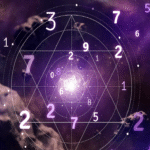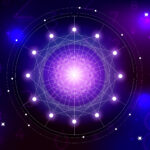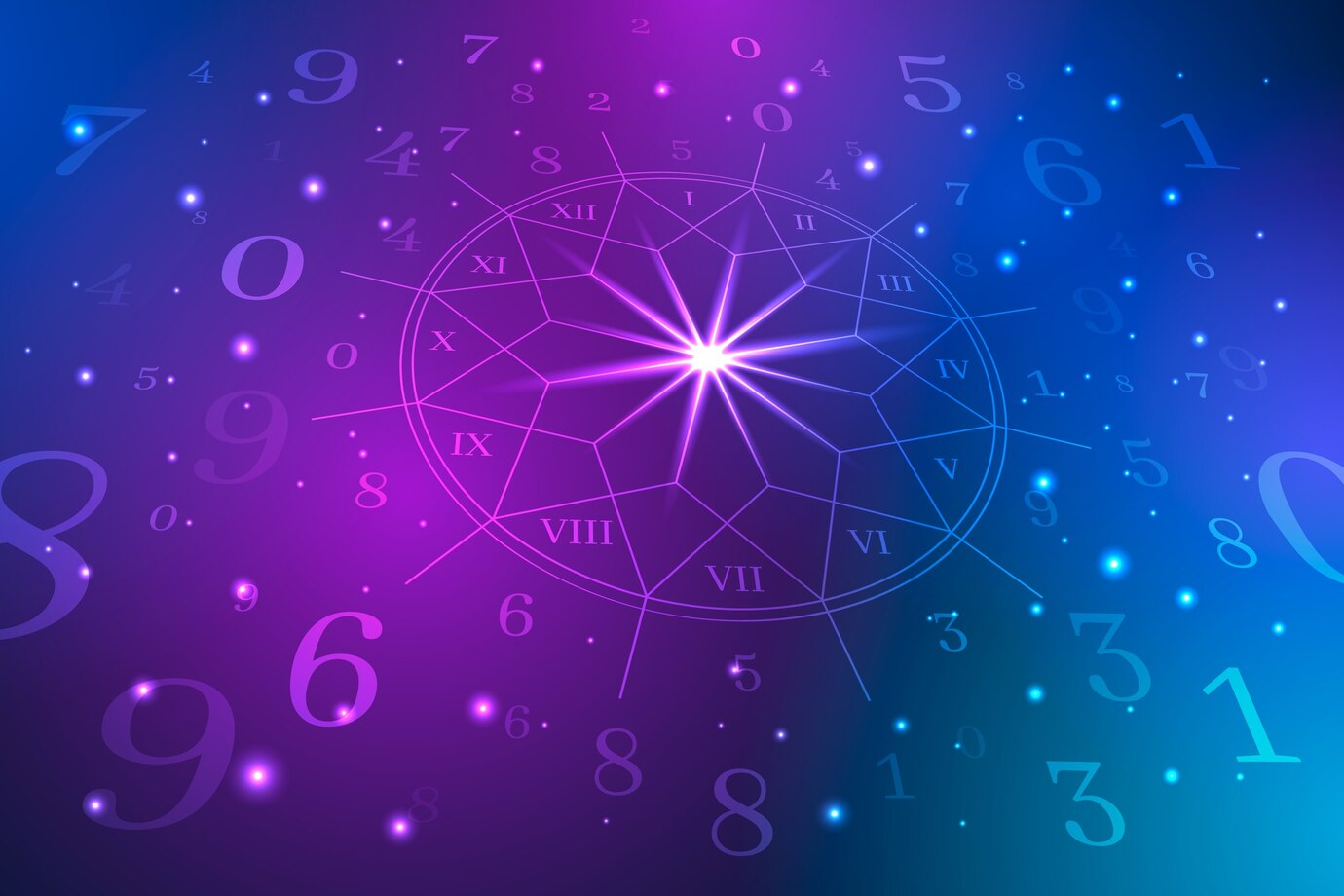This analysis provides a multi-dimensional understanding of the Janma Kundali (Vedic Natal Chart), the foundational map in Jyotish or Vedic Astrology. We explore its significance from traditional, contemporary, learning, and practical viewpoints, focusing on Natal Chart Basics within the Vedic framework. This celestial snapshot, calculated using the Sidereal Zodiac, reveals karmic patterns, inherent potentials, and life paths, serving as a guide for navigating Dharma (purpose) and Karma (action). It integrates Birth Chart Interpretation with self-awareness for both Astrology for Beginners and deeper students of Jyotish.
LENS 1: Traditional Foundation (The Traditional Jyotishi’s View)
Key Findings: Traditionally, the Janma Kundali is considered a map of accumulated karmas from past lives manifesting in the present. Calculated for the exact time and place of birth using the Sidereal Zodiac (reflecting constellations’ actual positions), it reveals the soul’s journey. The positions of the Grahas (Planets in Astrology) in specific Rashis (Signs) and Bhavas (Houses in Astrology) delineate destiny, strengths (bala), weaknesses, and the timing of life events through Dasha systems.
Detailed Analysis:
Classical Jyotish places immense importance on the Lagna (Ascendant) as the pivot of the Kundali. Planetary strengths and weaknesses are assessed through a complex system including Uchcha/Neecha (Exaltation/Debilitation), Moolatrikona, Swakshetra (Own Sign), Vargottama (same sign in Navamsa), and Shadbala (six-fold strength calculation). The Bhavas represent specific areas of life, and the Grahas act as karmic indicators within them. Birth Chart Interpretation involves analyzing these factors along with planetary aspects (Drishti) and yogas (planetary combinations).
- Technique Deep Dive: Panchanga Elements: A Kundali is intrinsically linked to the five elements of the Vedic calendar (Panchanga) at birth: Vara (weekday), Tithi (lunar day), Nakshatra (lunar mansion), Yoga (lunisolar angle), and Karana (half-tithi). These add crucial layers to interpretation beyond just planets and signs. The Janma Nakshatra (Moon’s constellation) is particularly vital.
- Expert Insight (Traditional Source): “The creator Brahma writes the fate of a person on their forehead based on their past karmas, and the astrologer reads this script through the planetary positions at the time of birth.” – Paraphrased principle from Vedic tradition.
- Hidden Wisdom: Varga Charts (Divisional Charts): Vedic astrology uses numerous divisional charts (like Navamsa D9 for marriage/dharma, Dasamsa D10 for career) derived from the main Kundali to analyze specific areas of life in great detail. These are fundamental for accurate Birth Chart Interpretation.
- Astrological Framework Map Suggestion: A diagram illustrating the Sidereal Zodiac vs. the Western Tropical Zodiac. Another showing the structure of a North or South Indian style chart layout.
- Critical Considerations: A purely fatalistic interpretation negates free will (purushartha). While the Kundali shows karmic tendencies, conscious action and remedies (upayas) can modify outcomes.
LENS 2: Contemporary Interpretation Framework (The Modern Jyotishi’s Approach)
Key Findings: Contemporary Jyotish retains the core principles but often integrates psychological awareness and a focus on self-understanding and spiritual growth. The Kundali is seen as a guide to navigating karma, understanding one’s innate nature (prakriti), and fulfilling one’s dharma. Natal Chart Basics are presented as tools for empowerment.
Detailed Analysis:
Modern practitioners explain Grahas as forces influencing our psychology and experiences. Rashis describe the qualities through which Grahas operate, and Bhavas are the arenas of life. The focus shifts slightly from prediction of fixed events towards understanding tendencies, psychological patterns, and areas for growth. Birth Chart Interpretation becomes a dialogue about navigating life challenges, leveraging strengths, and making conscious choices aligned with one’s karmic blueprint. Concepts like Atmakaraka (soul indicator planet) are explored for deeper self-understanding.
- Technique Deep Dive: Nakshatra Analysis: Contemporary Jyotish often emphasizes the Nakshatras (27 lunar mansions) occupied by key planets (especially the Moon and Lagna). Each Nakshatra has unique symbolism, deities, and qualities that provide much deeper insights than the Rashi alone.
- Expert Insight (Modern Jyotishi): “Your Kundali is a map of your karmic landscape, showing the terrain you’re navigating in this lifetime. Understanding it helps you choose the best paths and utilize the resources (planetary strengths) you were born with.” – Contemporary Jyotish Practitioner.
- Alternative Approaches: Some modern Jyotishis integrate concepts from Ayurveda (Vedic medicine) based on planetary placements, or explore Jyotish through a more explicitly spiritual or yogic lens.
- Astrological Framework Map Suggestion: A visual connecting Grahas (e.g., Chandra/Moon) to psychological functions (mind, emotions) and Nakshatras adding specific nuances to their expression.
- Critical Considerations: Over-emphasis on psychological language can sometimes dilute the unique predictive and karmic framework of traditional Jyotish. Maintaining fidelity to core principles is essential.
LENS 3: Learning Path Analysis (The Student’s Journey)
Key Findings: For the student (Astrology for Beginners in Jyotish), the initial learning curve involves grasping the Sidereal Zodiac difference, Sanskrit terminology (Graha, Rashi, Bhava, Nakshatra, Drishti), different chart styles (North/South Indian), and core concepts like karma. Memorizing planetary dignities, aspects, and Nakshatra meanings is foundational.
Detailed Analysis:
Understanding the Natal Chart Basics in Jyotish requires a different orientation than Western astrology. Students learn the glyphs, the characteristics of the Grahas, Rashis, and Bhavas, and the rules of planetary aspects (Drishti), which differ significantly (e.g., Mars aspects the 4th and 8th houses from itself, Jupiter the 5th and 9th). The concept of Nakshatras adds a significant layer of detail early on. Calculating planetary strengths and understanding Dasha systems are more advanced steps.
- Real-World Application: Students often start by analyzing their own Kundali and those of family, applying learned principles to understand personality traits and life patterns through a Vedic lens.
- Student Question: “Why is my Sun sign different in Vedic astrology?” Answer: Jyotish uses the Sidereal Zodiac, which aligns with the fixed stars/constellations. Western astrology uses the Tropical Zodiac, tied to the seasons. Due to the precession of the equinoxes, these zodiacs drift apart (~24 degrees currently), often placing your Sun (Surya) and other Grahas in the preceding Rashi compared to your Western chart.
- Expert Insight (Jyotish Student): “Learning the Nakshatras felt like unlocking a hidden level! It added so much depth to understanding my Moon sign. The Sanskrit terms were tricky at first, but they carry so much meaning.”
- Common Misconceptions vs. Reality: Misconception: Vedic astrology is just ‘Indian horoscopes’. Reality: Jyotish is a complex, sophisticated system (‘the science of light’) with deep philosophical roots in Vedic scriptures, involving intricate calculations and interpretations far beyond simple Sun-sign columns. Misconception: It’s purely fatalistic. Reality: While acknowledging karma, Jyotish emphasizes understanding patterns and provides tools (like Upayas/remedies) to navigate challenges and exercise free will.
LENS 4: Practical Implementation (The Practical Application Expert’s Guidance)
Key Findings: Practical application of Jyotish focuses on using Kundali insights for understanding karmic patterns, relationship compatibility (Kundali matching), choosing auspicious timing (Muhurta), identifying potential health issues (medical astrology branch), career guidance, and recommending remedial measures (Upayas) like mantras, gemstones, or charitable acts.
Detailed Analysis:
Jyotish consultants use Birth Chart Interpretation to guide clients on life path (dharma), career, relationships, and spiritual growth. Compatibility analysis often involves comparing Nakshatras (Koota matching) and planetary positions between charts. Muhurta helps select favourable times for important events (marriage, starting a business). Identifying challenging planetary placements or yogas can lead to suggesting specific Upayas intended to mitigate negative karmic influences or strengthen positive ones.
- Real-World Application: Using Jyotish to understand recurring obstacles as karmic patterns, choosing a compatible partner based on detailed Kundali matching, selecting an auspicious date for a wedding, wearing a gemstone recommended for a specific Graha.
- Technique Deep Dive: Upayas (Remedial Measures): This is a unique aspect. Based on afflicted Grahas or Bhavas, a Jyotishi might recommend specific mantras, gemstone therapy (prescribed carefully), fasting on certain days, charitable acts related to the Graha’s significations, or yagyas (ritual ceremonies).
- Expert Insight (Jyotish Consultant): “The Kundali reveals the karmic energies at play. My role is to illuminate these patterns and offer practical guidance, including appropriate Upayas, to help clients navigate their lives with greater awareness and harmony.”
- Practical Tip: Identify the lord of your Lagna (Lagna Lord or Lagnesha) and see which Bhava it occupies in your Kundali. This reveals a primary focus and driving force in your life.
- Chart Example Suggestion: A sample Kundali showing a specific Yoga (e.g., Gaja Kesari Yoga) or a challenging placement, with annotations explaining its potential effects and possible traditional Upayas.
PERSPECTIVE INTEGRATION MATRIX
| Feature | Traditional View | Contemporary View | Student Focus | Practical Use | Integration Point |
| Chart Goal | Map of Karma/Destiny | Guide for Dharma/Growth | Learning Terms/Sidereal/Nakshatras | Guidance, Timing, Remedies | Understanding karma (trad/contemp) informs practical guidance and remedies (practical). |
| Grahas/Planets | Karmic Agents/Indicators | Psychological/Spiritual Forces | Memorizing Meanings/Dignities | Identifying Strengths/Challenges | Psychological understanding (contemp) adds depth to karmic agent interpretation (trad). |
| Bhavas/Houses | Concrete Life Areas | Arenas for Karmic Experience | Learning Themes/Lords | Pinpointing Life Focus Areas | Experiential view (contemp) gives context to concrete areas (trad) for practical focus. |
| Application | Delineation/Prediction/Remedy | Self-Awareness/Spiritual Path | Building Foundational Knowledge | Muhurta, Compatibility, Upayas | Foundational knowledge (student) enables self-awareness (contemp) & effective remedies (practical). |
MISCONCEPTION ANALYSIS
| Common Belief | Jyotish Reality |
| It’s the same as Western Astrology. | It uses a different zodiac (Sidereal), unique techniques (Nakshatras, Dashas, Vargas), different aspect rules, and a distinct philosophical basis (karma). |
| Sun signs are the most important. | The Lagna (Ascendant) and Chandra (Moon), particularly its Nakshatra, are often considered more foundational than Surya (Sun) for individual delineation. |
| Gemstone remedies are magic cures. | Gemstones are considered potent Upayas but must be prescribed carefully by a qualified Jyotishi based on the entire Kundali; they aren’t instant fixes. |
| Jyotish is purely fatalistic. | It outlines karmic probabilities and patterns but acknowledges the role of free will (purushartha) and prescribes actions (karma/upayas) to navigate destiny. |
KEY DEVELOPMENTS & FUTURE DIRECTIONS (Evolution Timeline)
- Vedic Period (Ancient India): Roots in the Vedas, early astronomical observations linked to rituals. Nakshatras likely formalized.
- Classical Period (e.g., Parashara, Jaimini – dates debated): Compilation of foundational texts like Brihat Parashara Hora Shastra. Formalization of Grahas, Rashis, Bhavas, Aspects (Drishti), Yogas, Dashas, Varga charts.
- Medieval Period: Further commentaries, development of specialized branches like Tajika (annual charts) and Prasna (horary).
- Colonial/Modern Period: Interaction with Western thought, some decline, followed by revival movements in the 20th century.
- Late 20th Century – Present: Computerization aids complex calculations. Globalization leads to wider dissemination and integration debates. Increased interest in Nakshatras, Vargas, and remedial measures. Exploration of psychological correlations within the Vedic framework.
- Future: Continued integration of traditional principles with contemporary understanding, deeper research into Nakshatras and Vargas, potential validation studies, ethical considerations regarding remedies.
SYNTHESIS & RECOMMENDATIONS (Celestial Integration)
The Janma Kundali is a profound map of your soul’s journey according to Vedic wisdom. Integrating perspectives offers the richest understanding: appreciate the deep karmic and predictive insights of tradition (Traditional), embrace the potential for self-awareness and growth (Contemporary), patiently learn the unique language and techniques (Student), and focus on actionable guidance, timing, and potential remedies (Practical).









